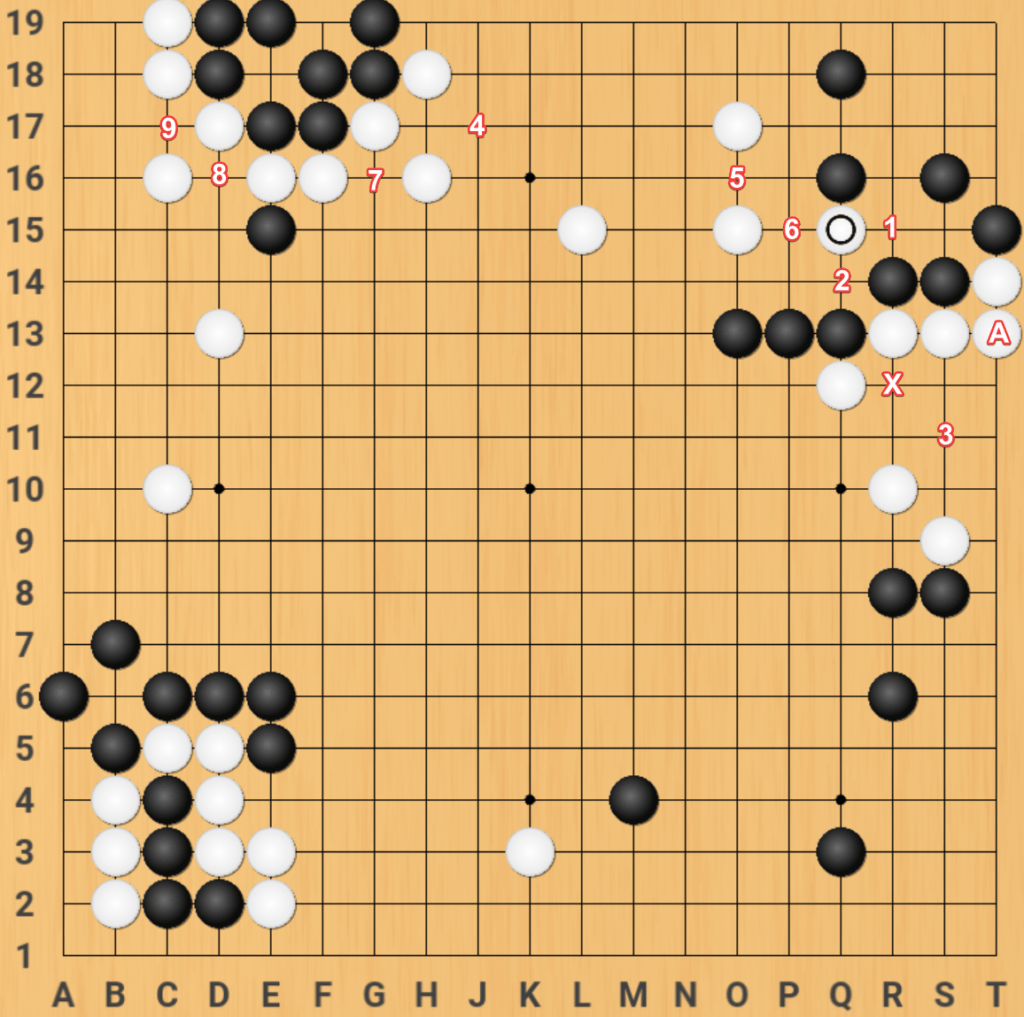I played a game today against a 7k opponent – the exact same rating as me. I am a student of the Clossi approach to move selection, which involves asking 3 questions:
- Do I have a weakness? if so, fix
- does my opponent have a weakness, if so, “attack” it
- otherwise , play a big move
From Ben Teuber’s Guide to Become Strong, we read
“the middlegame is not about territory, it is about the strength and weaknesses of groups”
Saijo Masataka
Let’s look at the first question in the clossi approach: do I have a weakness?
Now, the ability to assess weakness is based on your life and death skills primarily – what looks weak to me, will not look weak to a person much stronger and the review of this game bears this out.
My first opportunity to seize an advantage

In this position, I felt my weaknesses at 1 and 2 were threatened, so I played at 1.
But with deeper analysis, isnt White weaker? If I have enough freedom to ignore White’s last move and play at 3 and ‘X’, then White loses the ‘A’ group….
I might lose territory by ignoring White, but White might lose his entire group.
He actually is much weaker if I thoroughly understand how to stay alive while he moves closer to death.
I was not strong enough to see that White was weaker, so we ended up here:

here, I had a knee-jerk reaction to my weakness at 1… but if White plays 1 will anything? no!
So I really think the Clossi approach questions should be a comparison between your weaknesses and the opponents weaknesses. So in this case:
1 is a weakness code but it is an “informational” weakness to use Python logging levels as an analogy – it is not critical (life-threatening). So playing there is “red” – a bad idea
‘2’ is a weakness that is something of a warning – you may be disconnected and have to run or kill. So playing at 2 is better than 1. but it is more of a warning type situation… let’s say the move is yellow, not red: getting 2 groups connected reduces threats against you and is more important in terms of STRENGTH AND WEAKNESS OF GROUPS than playing at 1
Now, “3′ is urgent for White, because 4 leads to death for a group and leaves the other stones without a base and a long way to run. So because it is urgent for White, and because I only have informational and warning threats, i can attack his critical weakness.
so I would suggest that the questions in the Clossi approach should not be:
- am I weak? if so fix
- is he weak, is not ‘attack’
- play a big move
They instead should be:
- are my weakeness more critical than opponent? if so then use the 5 ways to fix
- are opponent’s weaknesses more critical than mine? if so, then use the 4 ways to ‘attack’
- play a big move
With these new move priorities we use the 4 ways to attack instead of the 5 ways to fix and thus we:
- remove base? already done
- surround? O11 is a surround move, N11 is too passive
- remove eyes? not so relevant
- play vital point, yes, playing 3
So the AI shows us that the analysis is actually on-point:

One Comment